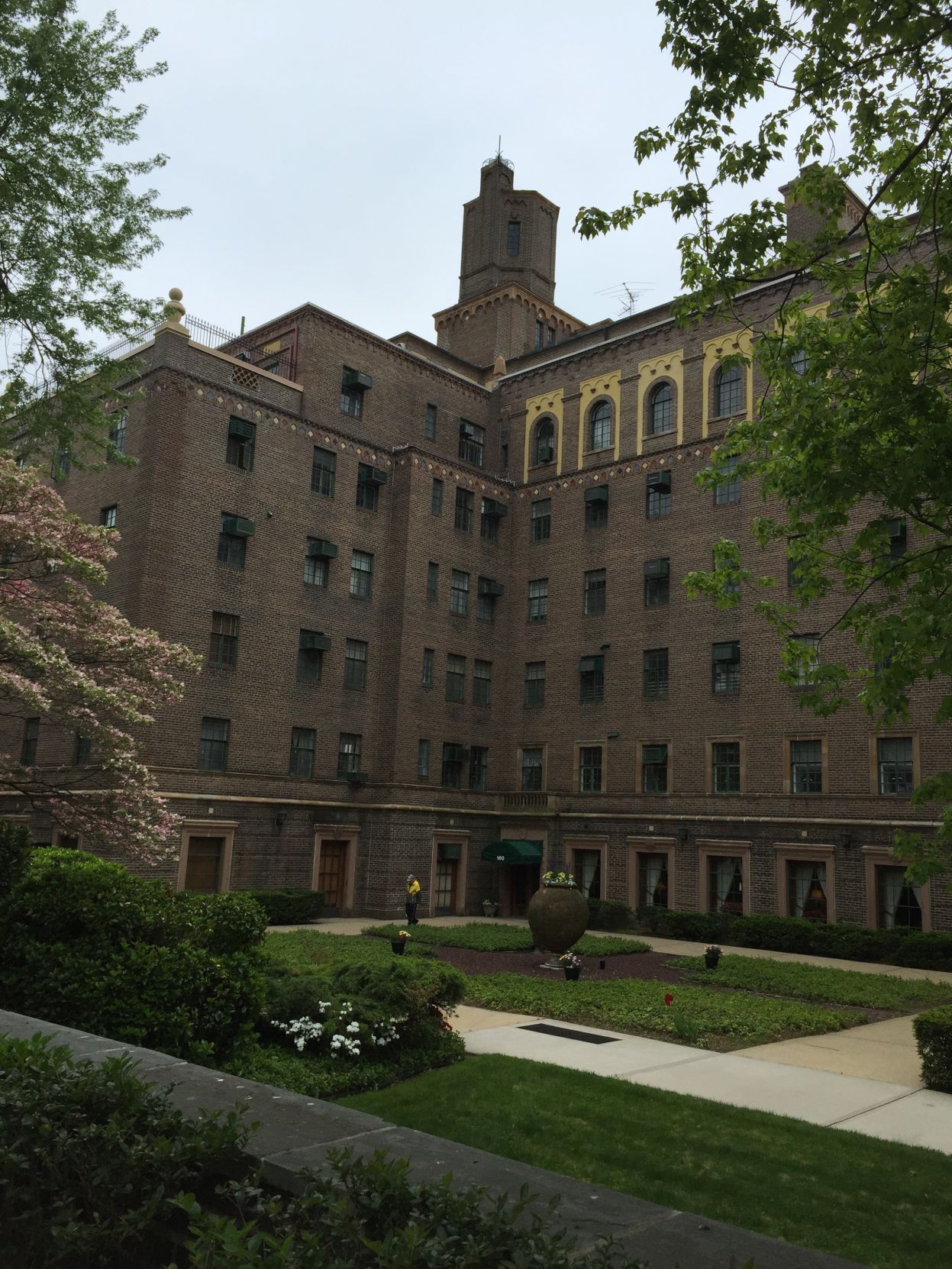One of Great Neck’s most noted apartment buildings—Kenwood Gardens—was recognized by the Great Neck Historical Society recently at a meeting attended by many residents of the complex.
A Heritage Recognition Plaque to be mounted on the outside of the building and a certificate with the building’s history, which will be placed in the lobby, was presented to the co-op president, Bruce Funk, by Historical Society President Alice Kasten and Plaque Program Chair Joan Wheeler.
The meeting featured an account of the building’s history and a discussion about its many unusual features.
The seven-story structure on Middle Neck Road in the Village of Great Neck Estates was the first co-op apartment on Long Island.
It began in 1925 as the vision of real estate moguls Charles E. Finlay, who had developed the adjoining Village of Kensington with his partner, R.J. Rickert.
In newspaper advertisements New York City residents were enticed to move to “the most luxurious multiple dwelling ever built.”
Residents could come from their upscale city apartments to experience elegant living in a country atmosphere, ads said. The building was promoted as “Where Town and Country Meet.”
The project began when the developers purchased the estate of Mary J. Shea.
They projected the entire cost of the venture to be $1,250,000, later increasing it to $1,300,000.
They selected noted architect Leroy P. Ward to design the building, considered by many to be the finest architect since Sanford White. When the building was completed, the architect lived in a large penthouse in the building, reportedly with actress Gloria Swanson.
The plan was to create a building as a villa in the shape of the letter “H,” permitting every apartment to face at least two different exposures.
Penthouses and terraced apartments would have even more views. The building had eight entrances for residents to use and was constructed of brick, making it completely fireproof.
The construction company Cauldwell-Wingate, established in 1910, was selected to build the Kenwood.
Among their noted buildings is Saks’ New York flagship location and the Frick Museum.
To complete the outside of the property, the prestigious landscape design firm Lewis and Valentine was engaged to create a formal garden surrounding the building. The company was known for its ability to replant mature trees 20-30 feet tall.
They placed 12 silver maple trees around the grounds to offer shade when walking through lovely garden paths. Many of the trees were removed a few years ago due to blight and storm damage. They had reached a height of almost 100 feet.
The building has 69 apartments, including a few penthouses with 1,000-foot terraces.
Kenwood had a perfect blend of city luxury and the suburban North shore, as well as the refinements of a modern hotel.
The apartments were spacious, with oversized rooms. Most living rooms had wood burning fireplaces, and some boasted 12-foot ceilings.
All floors were solid red oak, and the common hallway flooring was made of imported Portuguese tile. Electric refrigerators, rather than antiquated iceboxes, were features in every kitchen, with apartment dumbwaiters to dispose of garbage and refuse.
Additional amenities included separate maid’s and chauffeur’s quarters located on the main floor.
A large laundry room was available for use by residents or their domestic staff. The room housed permanently mounted ironing boards, washing sinks with attached wringers, and gas fired drying racks.
Each quadrant of the building has its own dedicated elevator, and there are no more than four apartments on each floor, some with convenient front and back entrances.
Originally, the building housed a beauty salon, barber shop, drug store, valet service, and dress shop, in addition to a fine-dining restaurant which featured music and dancing every Wednesday and Saturday evening, as well as room service to all residents.
A parking garage was never considered, since most residents had their own chauffeurs and there was adequate street parking.
The offices of the Village of Great Neck Estates were originally housed in the building.
One of the earliest owners of an apartment was Judge Elbert H. Gary who, in 1901, with his partners Andrew Carnegie, Charles S. Schwab and J. P. Morgan, started The U.S. Steel Corporation, the first billion-dollar corporation in the United States. Judge Gary served as its chief executive officer for 25 years.
For further information about the Great Neck Historical Society visit www.greatneckhistorical.org.



